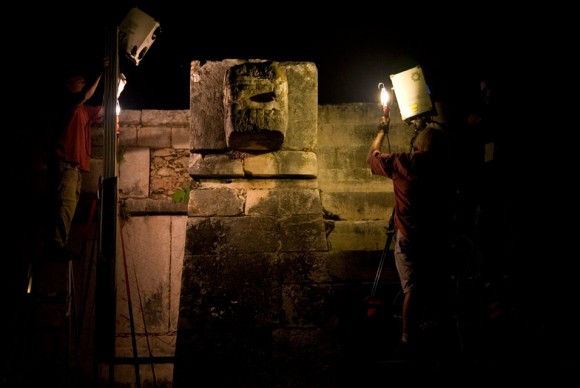New Online Archive Brings the Ancient Maya City of Chichen Itza to Scholars’ Desktops
EMERYVILLE, CA.- This week a new archaeological data archive and web-based collaborative learning tool launches to provide researchers, educators, filmmakers and digital heritage enthusiasts with the most complete data to date of any ancient Maya site. The archive centerpiece is a priceless 3D record of the ancient Maya city of Chichen Itza, recently voted one of the “New Seven Wonders of the World” by an eponymous Swiss-based foundation.
Computer visualization researchers at the Institute for the Study and Integration of Graphical Heritage Techniques (INSIGHT) generated the open source archaeological data archive on site in the Yucatan, through the use of 3D laser scanning equipment and digital photographs. The INSIGHT team then synthesized raw data into 3D computer models of the site today; the team also visualized the site as it may have looked in the past, paying meticulous attention to texture and light. Their data and tools are now available online.
“This is the first time 3D documentation has been completed on this scale for any site in ancient Mesoamerica, and includes its most important museum objects,” said INSIGHT Director Kevin Cain.
Mayaskies.net builds on research completed for Chabot Space and Science Center’s Tales of the Maya Skies, a full-dome planetarium production showcasing the astronomical achievements of the ancient Maya. Funded by the National Science Foundation and Instituto Politecnico Nacional, Maya Skies yielded highly precise digital visualizations of buildings and objects in Chichen Itza. The interdisciplinary project also resulted in new research findings for both the archaeology and computer graphics fields.
“Working with archaeological data this way can change the way we look at the sites themselves,” Mr. Cain notes. “Eduardo Perez (INAH head at Chichen Itza at the time of the field work) described the experience of viewing Chichen reliefs in 3D on the computer as ‘seeing them for the first time’. That’s a wonderful testament to the inherent power of computer visualization.”
Related posts:

